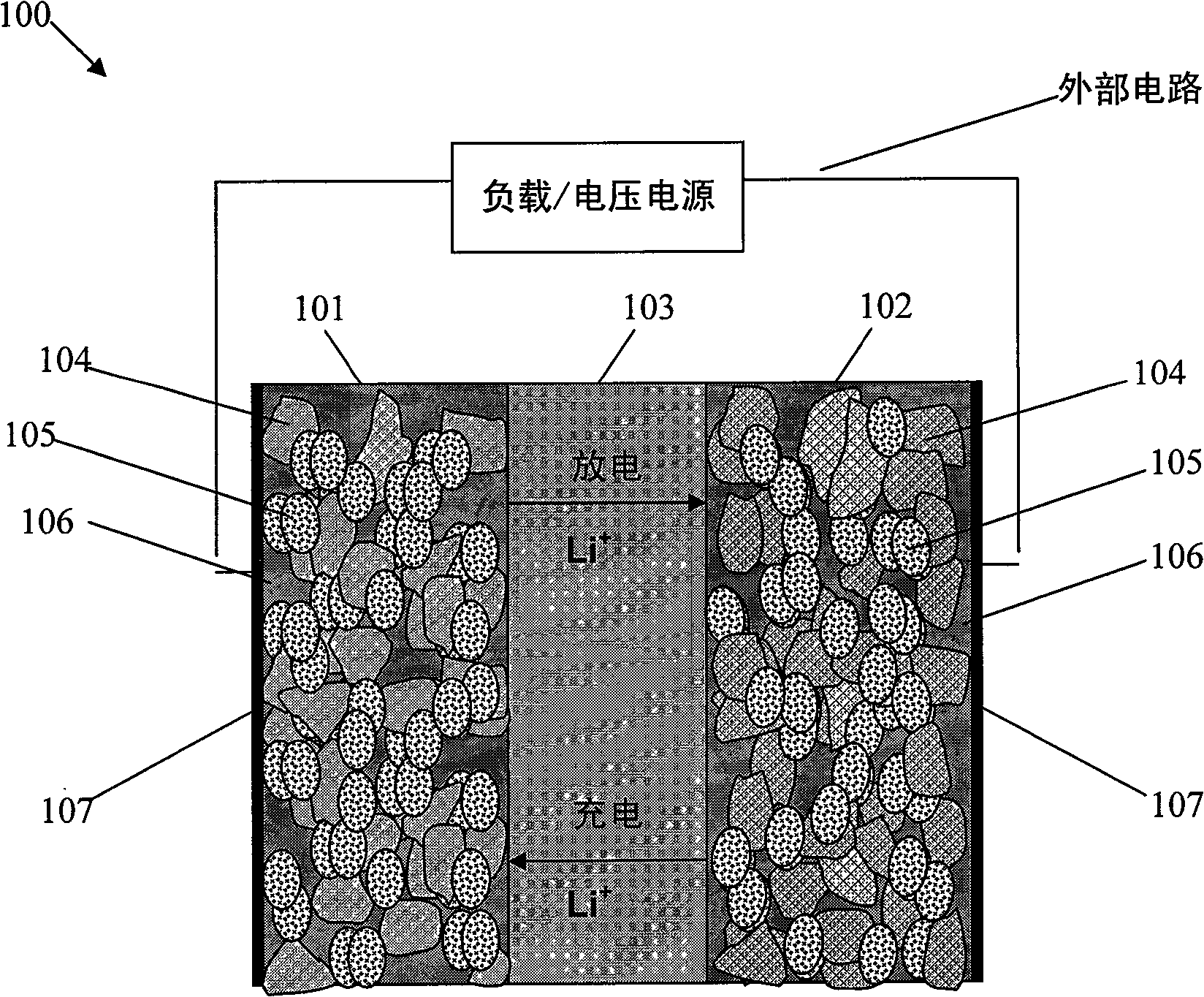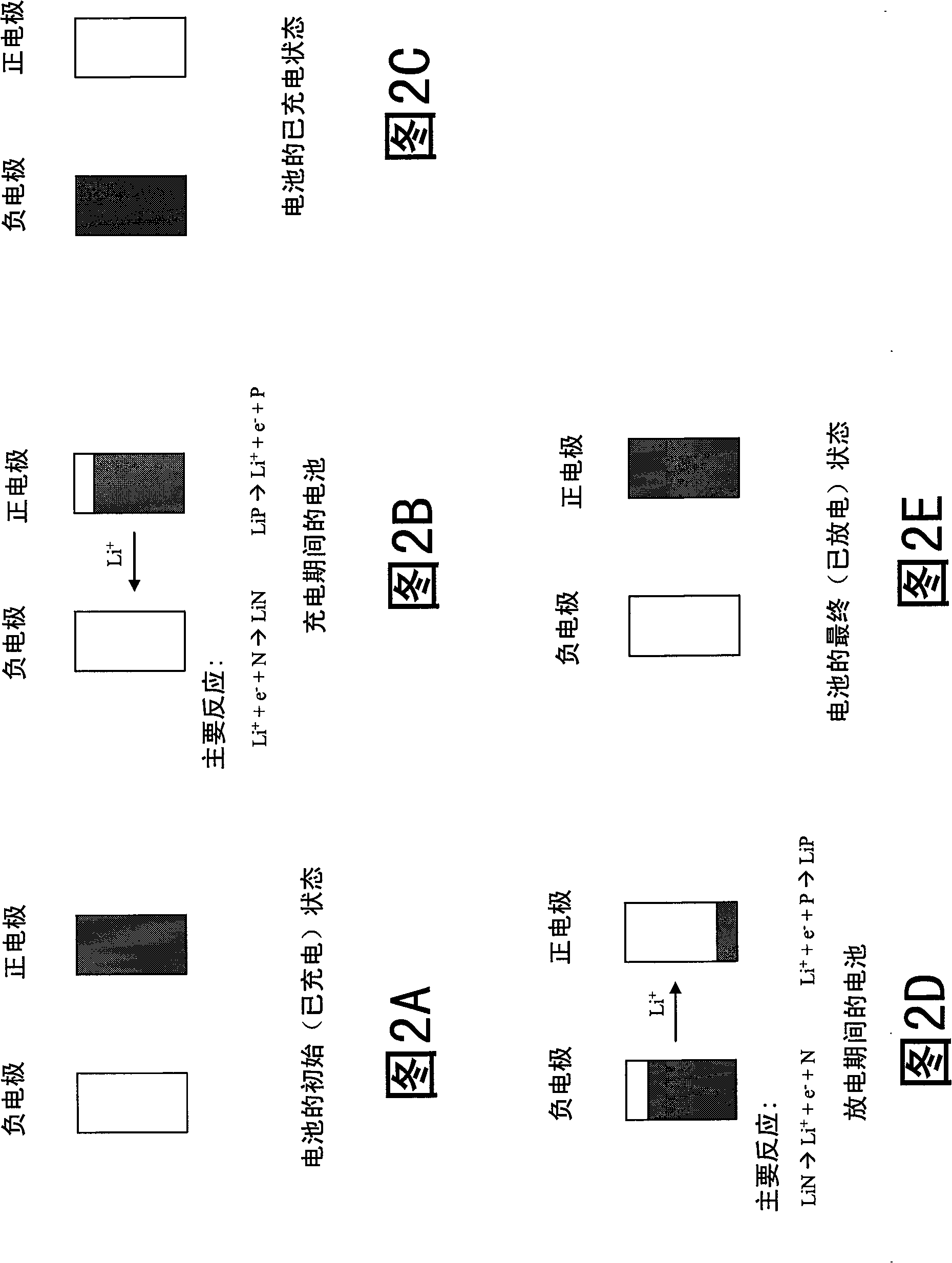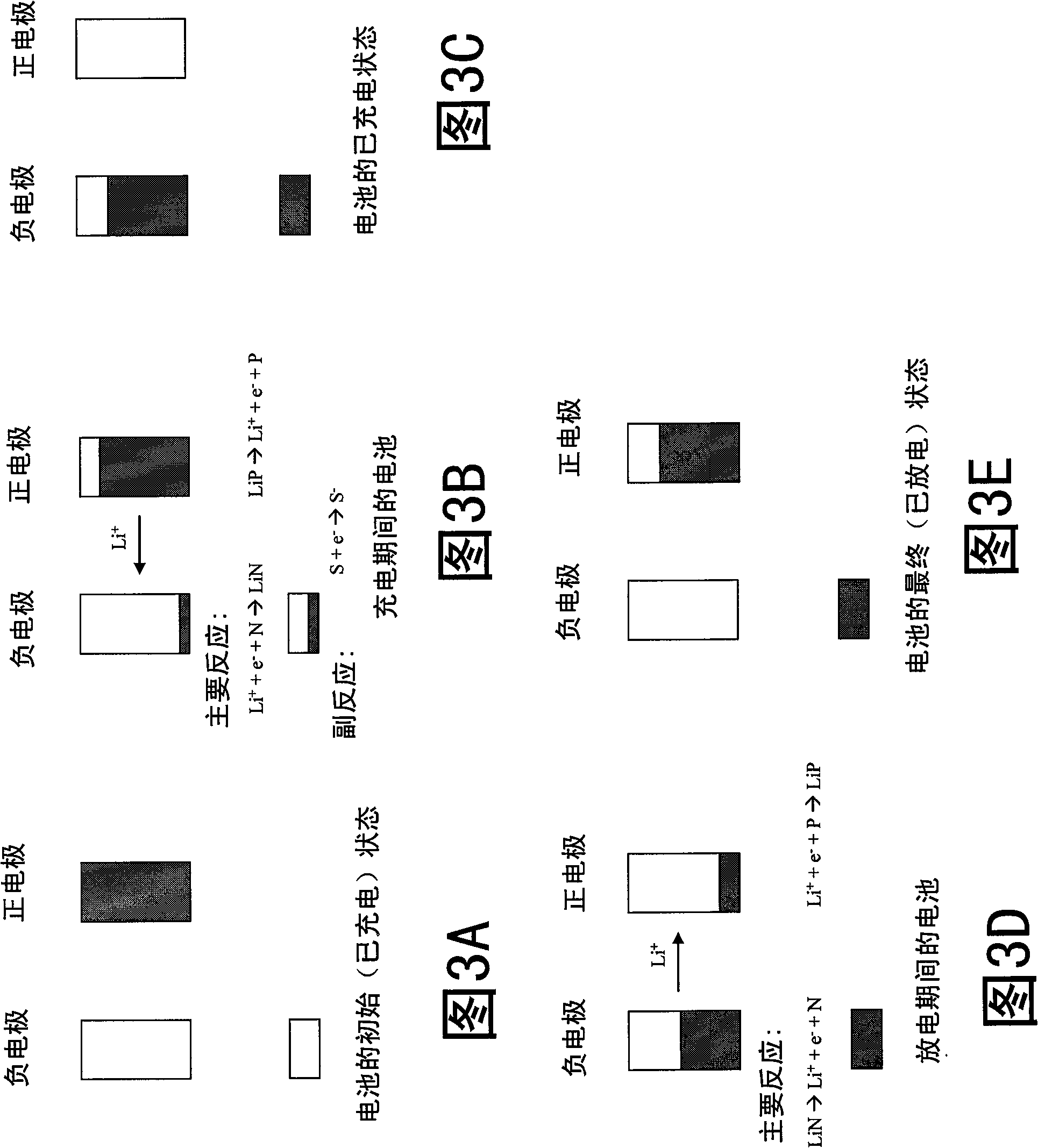Lithium reservoir system and method for rechargeable lithium ion batteries
A lithium-ion battery and electronic circuit technology, applied in the direction of non-aqueous electrolyte battery, electrolyte battery manufacturing, secondary battery charging/discharging, etc., can solve the problems of reducing the uniformity of current distribution, reducing the battery rate capacity, etc., to achieve the goal of increasing life Effect
- Summary
- Abstract
- Description
- Claims
- Application Information
AI Technical Summary
Problems solved by technology
Method used
Image
Examples
Embodiment Construction
[0042] figure 1 A "conventional" Li-ion cell 100 is shown comprising a negative electrode 101 , a positive electrode 102 and a separator region 103 between the negative electrode 101 and the positive electrode 102 . Both the negative electrode 101 and the positive electrode 102 include an active material 104 that can intercalate lithium, an inert material 105 , an electrolyte 106 and a current collector 107 . Separator region 103 includes an electrolyte with lithium cations, acting as a physical separator between negative electrode 101 and positive electrode 102 so that the electrodes do not electrically connect within cell 100 .
[0043] During charging, electrons are generated at the positive electrode 102 and an equal amount of electrons are consumed at the negative electrode 101 . Electrons are transferred via an external circuit. Under ideal working conditions of the battery 100, electrons are generated at the positive electrode 102 because lithium ions are extracted fr...
PUM
 Login to View More
Login to View More Abstract
Description
Claims
Application Information
 Login to View More
Login to View More - R&D
- Intellectual Property
- Life Sciences
- Materials
- Tech Scout
- Unparalleled Data Quality
- Higher Quality Content
- 60% Fewer Hallucinations
Browse by: Latest US Patents, China's latest patents, Technical Efficacy Thesaurus, Application Domain, Technology Topic, Popular Technical Reports.
© 2025 PatSnap. All rights reserved.Legal|Privacy policy|Modern Slavery Act Transparency Statement|Sitemap|About US| Contact US: help@patsnap.com



